Having problems with your Corona Inverter Heater?. Are you plagued with ongoing intermittent E4 and E1 Error Codes?. Well, the chances are that you need to service your Corona Inverter Heater and give it a good cleaning. Taking it to a Corona Distributor can be both time consuming and costly, and in some locations there are just no distributors who are interested in offering servicing to these heaters, so why not carry out the servicing yourself?.
Here we provided a step by step guide (complete with pictures & video) on how to strip down and service your own Corona Inverter Heater. As usual common sense safety rules apply, in other words whilst its perfectly legal (at least in the UK) to undertake this work for yourself, make sure that you are both confident and competent enough to follow this guide, if not then its probably better to leave it to a professional or check a community social media page for a local handyman willing to undertake the work.
However most competent handymen and DIY’ers who are capable of putting up a shelf or assembling flat pack furniture should be able to service their own Corona Heater for nothing more than an hour or two of their time, when following this step by step guide.
For those who require a little more detail, there is also a 1hr and 30 minute video which can be found the bottom of this page
Top Tip:- It often helps to take photos of your own along the way, using a camera or phone as you carry out the disassembly, especially if you choose to disconnect any wiring or piping to give easier access, this way, if you run into problems during the re-assembly then you can refer to the photos.
First of all, here are the tools that you will need:-
Pozi-Screw Driver, Pliers, Wire Wool or Fine Sandpaper, Dish Detergent, Oven Cleaner, disposable gloves and a Vacuum Cleaner.
So lets get started. Sorry about the quality of the photos, but they were taken several years ago, using a low-res camera phone.
1) First of all, remove the screws holding together the front cover and hot air outlet grill. On some Corona Inverter heaters, the front cover and outlet grill are one part, with fixing screws on the sides. However, on other models (such as the Corona 3016) the cover and grill are two individual parts, each secured with two fixing screws. The main front cover screws on these models are located on each side, at the bottom of the panel, whilst the grill screws are located at each side and can be accessed once the main cover is removed. The following photo shows the one part cover, with side fixing screws.
Carefully remove the front cover, giving access to the Electronic control PCB, and the grey, metal encased Burn / Atomization chamber
Turn the heater around, and remove the four screws which secure the combined rear convection grill and fan assembly. Once the screws are removed, lift the panel up slightly to unhook it from its mounting grooves, and gently place it on the floor. Note that the actual fan, and its wiring also come away with the panel, so care should be taken not to stretch or damage the wiring or fan blades.
Next, locate the small electronic fuel pump which is found to the bottom right, under the control pcb. Using pliers, loosen and remove the pipe housing connector from the top of the pump. Once undone, the copper fuel pipe simply lifts out of the pump outlet nozzle.
Remove the single screw from the bracket mounting which holds the copper fuel feed pipe.
Return to the rear panel, and behind the previously removed fan assembly, are four additional screws. These hold in place, the main grey metal enclosure containing the burner.
Remove the rubber air pipe, which connects to the lower combustion fan unit in order to supply air to the burner.
With slight force, push the grey metal burn chamber enclosure upwards and forwards in order to unhook it from the rear panel, and once released you should be able to pull the enclosure forward, and out of the front of the heater. Be careful of the fixed wiring which is still attached to the underside of the enclosure, but there is just enough length on these wires to pull the enclosure just outside of the front of the heater and lie on the floor / bench in order to work on.
Disconnect, the two yellow wires which are fixed to the thermal switch on top of the grey metal enclosure, you may also find it a little easier to undo some of the plastic wiring loom clips to allow a little more flexibility in the cables running to the enclosure. Next remove the side screws which hold the metal enclosure together in order to access the main atomization (burn) chamber,
Once the metal sides of the enclosure are removed, you will now be able to see and access the main burn chamber. On some models you will now also need to remove the round metal top on the burn chamber. To do this, pull up the two metal tab ‘ears’ which are folded down, and straighten them upwards, the top should now pull upwards over the tabs and you can remove it.
Using a long screwdriver, undo and remove the three screws which hold the burner plates onto the atomizer. There are two parts to this burner, which should just lift out, however be careful of the bottom part, which has a very thin, delicate gasket underneath it.
Give the two parts a very good clean in order to remove all of the carbon deposits. First I soaked them for several minutes in a mixture of hot water and dish detergent, and then used some foaming Oven Cleaner (Mr Muscle Brand in the UK) and an old toothbrush to completely scrub the mesh clean. Wear gloves at this point as not only is it a dirty job, but oven cleaner is caustic and can cause skin burns. Rinse completely after cleaning and allow to dry.
Inside the burn chamber, there are two small metal rods. One of these is connected by a thick wire and is the igniter and generally requires no cleaning. However there is also another curved metal rod at the opposite side to the igniter, which is the flame rod (Flame Detector or FLOD). This is effectively a sensor which sits in the flame in order to sense that the heater has successfully lit and monitor the flame and so over time can also quickly get covered in carbon which changes its Electronic Resistance and will eventually lead to the heater incorrectly thinking that the flame is not longer present – shutting down with ‘E1’ or ‘F1’ error codes.
Remove the flame rod, by firstly disconnecting the wire attached underneath, and then remove the single screw holding the rod bracket in place inside the chamber. It may be useful to take a photo at this point showing the exact original position of the flame rod, so it can be refitted in the same position.
Pull the flame rod out, and also scrub it with oven cleaner. Next use some wire wool or fine grit sandpaper and gently remove any remaining stubborn soot and carbon deposits and return the rod back to as much bare metal as is possible without damaging the surface. Rinse in cold water, dry and refit the flame rod back into the chamber – maintaining its original position.
Finally, give the burn chamber a good clean out with a vacuum cleaner. Whilst you have the Combustion Chamber apart, its also worth checking the bowl under the burner to check for rust / muck build up. The image below was emailed to us by “Mister B” and shows large amounts of build up, which caused combustion errors, eventually leading to the heater continuously shutting down. Using Dipetane Additive at the dose of 10 ml to every 4 Litres of heating oil should reduce the amount of this Carbon build up
Once everything has been cleaned and allowed to dry, carefully Re-assemble the heater, test and enjoy your newly serviced Corona Inverter Heater!.
I would also recommend (if you are not doing so already) that you filter any fuel (regardless of premium C1 paraffin or heating oil / kerosene) through a “Mr Funnel” filter in order to remove any water / dirt contamination and help to minimise future issues.

I’ve also recently (2019) found a fuel additive called Dipetane which seems to help reduce the amount of carbon build up in the combustion chamber when added at the dose of 10ml to every 4 litres of fuel, and so should help prevent a return of the error in the future. (Although annual checking & servicing should still be maintained).
For those who require a little more information and a better, more informative guide, there is a video below which shows the entire procedure. Thanks to Jon Porter for providing the Video link, and to “Porky Wizard” for producing the detailed 90 minute video!
If you are still encountering “E” or “F” based errors on your inverter heater, even after following the guide above, then its probably time to replace the flame rod with a new part. Alternative, a work around exists which restores the functionality of the existing Flame Rod and is described in the following video.

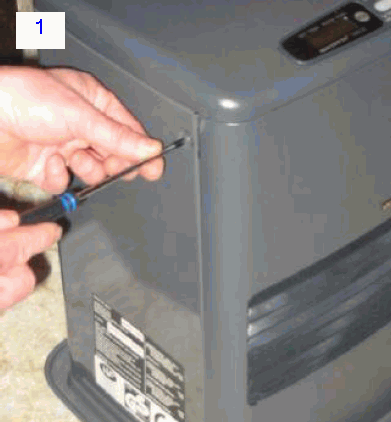
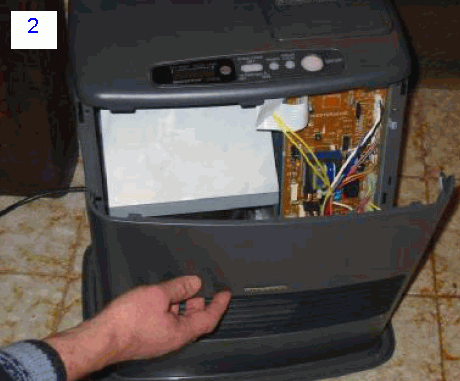
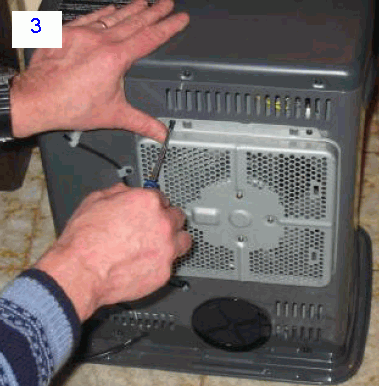
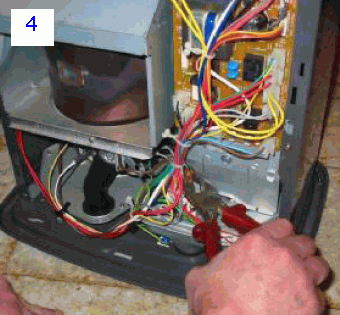



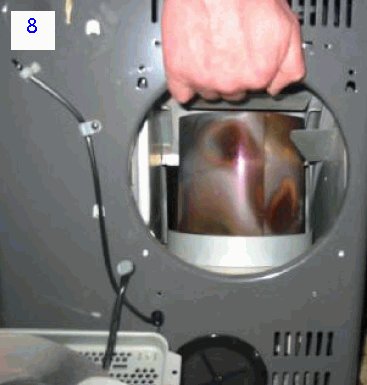
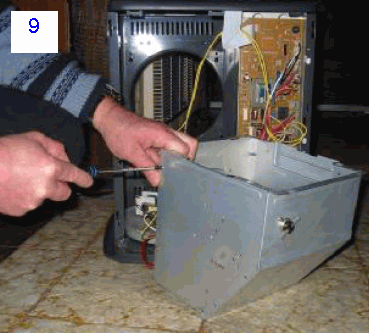
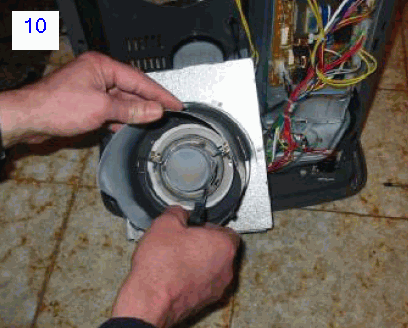
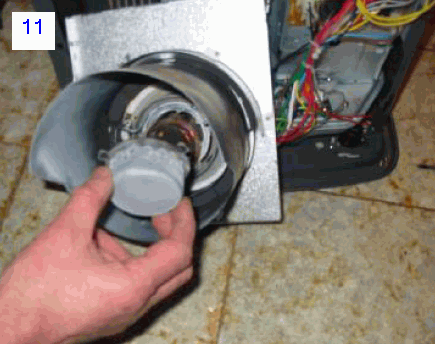

Hi Mark
Stripping the fuel pump is something i’ve never needed to do, and its not something that I can recall anybody else in the comments doing. All I can suggest is that when you take apart the pump that you photograph each stage so that you can recall where everything goes when it comes to re-assembly, obviously its not always possible to this, if several parts all go in different directions as soon as the case is opened!.
These kind of pumps are called facet pumps, if you want to do a search, but I couldn’t find anything useful on stripping these pumps down from a quick Google or Youtube search.
My own inverter heater is running at the moment, and its also a blue flame, with occasional flecks of yellow. So at least on that score, there doesn’t seem to be anything out of place.
Hello.
Many thanks for all that, I think I’ve narrowed it down to a bad batch of fuel, amazingly enough premium parraffin from local garage. Filter kept going brown and advice I had was poor fuel or even parrafin with Bio fuel in it which attracts moisture.
I’ve also re coated the burn chamber with high temp 800c paint as advised as it helps reduce carbon build up on the actual assembly instead it sits on the coating which can be removed more easily if needed next time.
My pump was ok I just cleaned the brass parts in acetone.
I enjoy fixing these and each aspect is different but ultimately now I’ll be doing this on each component ie, burner assembly, both fan units, sensors, tank and pump that way nothing is missed in the chain.
Maybe my experience and so far positive results can help others as well.
Hello.
I’ve got an issue where the heater fires up then shuts down while making a constant clicking sound. It keeps clicking then throws up E4 or E0. Could this be a pump issue or flame sensor. The igniter is working and it produces a flame but then shuts down after a short while.
Regards Mark.
If the heater is igniting and then shutting down very soon after then it does sound like the Flame rod. I would try cleaning it first to see if it solves the problem. However if the fault remains but cleaning the rod has at least changed the symptoms of the fault, then it would generally indicate enough confidence to replace it.
This Youtube Video may also help as a work around.
https://www.youtube.com/watch?v=vNdkrP1ynok
Hello.
It was nothing to do with pump or flame rod it was a simple error. I hadn’t seated the rubber hose from fan base correctly so it was drawing excess air I presume. Lesson learnt check and double check.
Can I ask though is there a way to test the pumps using a multimeter, I’ve only ever had waxing up or varnishing in the small plastic end caps in the pump brass tubes. But be good if I knew how to test them ie the winding and resistor if that’s what it is.
For Mark with the heater that starts and then shuts down.
I have 4 of these heaters for my house and each year at this time I service them prior to winter.
This year I discovered that one of my pumps was not getting the fuel properly but instead weakly pushing it through.
To check this , I remove the pump , lay the filter end into a container of kero , and start the heater. After the evaporating chamber heats up the pump starts to run and it’s easy to see if it’s spraying out a good jet of fuel and mine wasn’t.
I had bought a gallon of fluid which was to clean my Schultz underbody sealer gun and which I discovered is also great for other cleaning jobs with paint etc , bought in motor factors.
So I put some into a small container and started up the heater with the pump filter submerged in this cleaning product and bingo the pump cleared itself and now pumps fine.
I decided to do this with all of my heaters. I also gently cleaned all of the flame rod sensors in the 4 of them.
I also remove the evaporating chambers and clean them because with kero I can never be sure that there is nothing else in it which might evaporate but not burn off and that will stop the heater from working.
Otherwise these are great little heaters and with practice I can now break down and rebuild one in about 45 minutes. Having 4 makes repairs easier as I can swap parts to test them.
I should add one more thing that I forgot.
After clearing the pump with the cleaning fluid, I ran it until it almost ran dry , then I put it back into the container of kerosene and ran it until kero came through.
I have no idea how the cleaning fluid would react to heat or flame so best to make sure that it’s all gone out of the pump before connecting it back to the tube to the injector.
Cheers for the info on the E4 error, read the blog & followed PorkyWizard’s instructions (YouTube Video) on cleaning the flame rod & hey presto all back up & running.
Hi. I’m getting a e-9 error. I was hoping someone could tell me how to fix this error or point me in the direction of someone who can. Cheers
E9 is the shut off error in relation to the heater being knocked. Make sure the heater is on a flat stable surface away from doorways with people walking past, and not close to any other appliance which may create vibration. If the heater is in a room which is close to a road with passing traffic, then try moving the heater to the opposite side. If the problem continues, try placing the heater on a thick door mat or off cut of carpet.
Your explanation is so clear…. Excellent video…
My Inverter 5006 is running fine except the eco feature does not work… The eco light comes on but it will continue to heat on full power 10 – 15 degrees past the set tempand will not switch off or wind down the heat.. Any idea what the problem could be? Any help much appreciated.
Hi
Thank you for a very clear presentation.
I have an inverter heater a 3200 watt.it tarted smoking excessively at start up and again at shut down. When running it runs well with no smoke. There are no error codes shown.I clean out the burn shambles and filter but it still smokes. At start up the smoke starts before the fan start but one evening the fan starts it billows smoke but once ignited it runs normally. Then at shut down when the burn stops the fan continues to produce smoke for a few seconds. Any advice appreciated
Hi
I have the Zibro LC150 heater.
It refuses to start and shows Eroor ‘E-2’
Can you shed any light on this particular code please?
Have used the video to clean the heater rod and everything is brill. Thank you for such a brilliant video.
Is there some place to train to service these machines, as a lot of people around here use them, and we have no service agent?
Many thanks, again.
Keith
Hi I have a Qlima laser heater . Switch it on and get a blue flame but then it starts to go yellow and switches off. Any ideas what could be causing this
Hi where can i purchase a fuel pump for LC-132
hi mr Admin.lit up the Corona 4kw unit today-very impressed using the free paraffin that came with it.but I don’t get the “timer” which i can set to come ON -but no sign of any instruction to set an OFF time. Is it me?
I have followed your instructions -ordered the fuel additive -although a cheaper source now on ebay that your recommended one- and a big Mr Funnel. Our local garage sells kero so all set to get a delivery!
many thanks-The Mr Funnel has a nice video on U tube showing it working
barry
Hi I’ve got an e7 fault showing , had heater on then it flashed and cut off showing E7 ..I’ve cleaned unit but still same problem..any ideas thanks